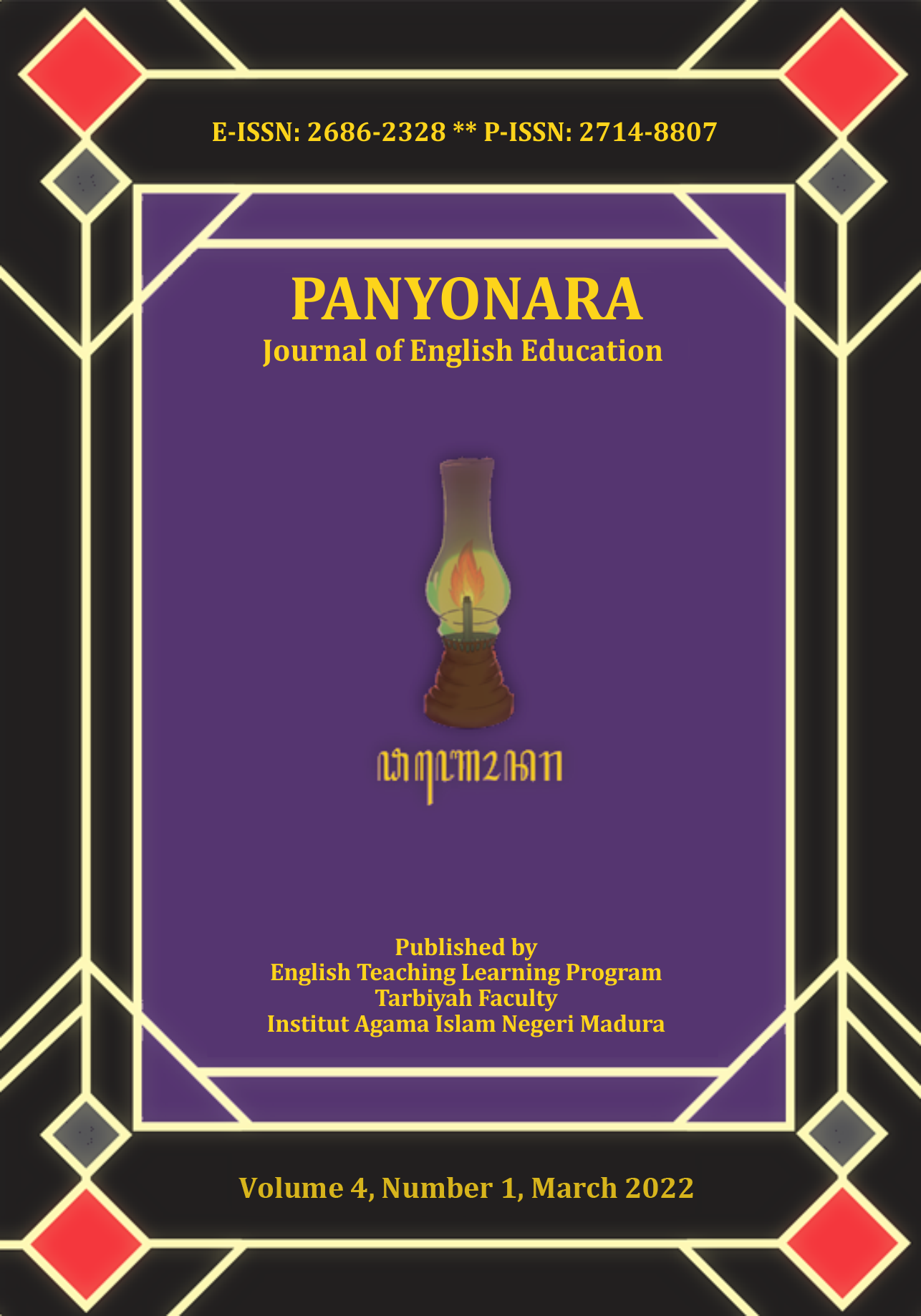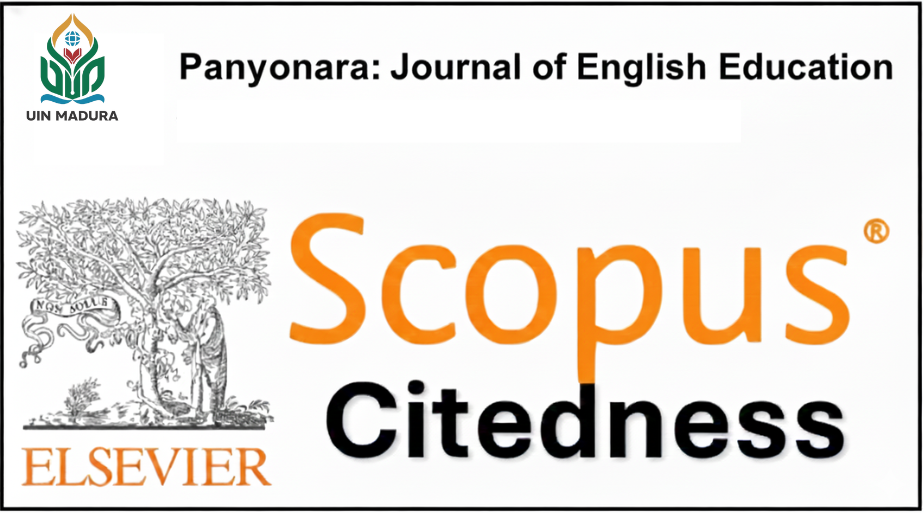English Learning Using Infographics for Balinese Secondary School Students
 Abstract views: 954
,
Abstract views: 954
,
 PDF downloads: 814
PDF downloads: 814
Abstract
As the facilitator of the learning process, the teacher needs to utilize appropriate media for students to help them learn better. Visual media is considered a great help as it provides information more attractively. Thus, this study aimed to develop infographics as an English teaching medium for 8th-grade junior high school students. The subject of this research was the English learning media used by the 8th-grade teacher at SMPN 4 Singaraja. This study was a Design and Development research which consisted of 3 steps of research, namely design, development, and evaluation. The researcher's notes, infographic development blueprints, instrument validation, and expert judgment were used to collect the data. The data were from the researchers' notes, and the infographic development blueprint was described qualitatively. Meanwhile, the score obtained from the instrument validation and the results of the expert judgment were explained quantitatively. The final result indicated that the infographic is very good to be used as an English teaching medium, especially for the 8th grade of junior high school students. Therefore, this research concluded that by developing books containing infographics, English teachers could have another type of visual media to teach all topics in grade 8 by using infographics.
Downloads
References
Agung, A. A. G. (2012). Evaluasi Pendidikan. Singaraja: Institut Keguruan dan Ilmu Pendidikan Negeri Singaraja.
Aini, W. N. (2013). Instructional Media in Teaching English to Young Learners: A Case Study in Elementary Schools in Kuningan. Journal of English and Education, 1(1), 196–205. https://ejournal.upi.edu/index.php/L-E/article/view/350/239
Akram Awla, H. (2014). Learning Styles and Their Relation to Teaching Styles. International Journal of Language and Linguistics, 2(3), 241-245. https://doi.org/10.11648/j.ijll.20140203.23
Al-Mohammadi, N. (2017). Effectiveness of Using Infographics as an Approach for Teaching Programming Fundamentals on Developing Analytical Thinking Skills for High School Students in the City of Makkah in Saudi Arabia, Global Journal of Educational Studies, 3(1), 22. https://doi.org/10.5296/gjes.v3i1.10854
Al-Shara, I. (2015). Learning and Teaching Between Enjoyment and Boredom as Realized by the Students: A Survey from the Educational Field. European Scientific Journal, 11(19), 146–168. https://eujournal.org/index.php/esj/article/view/5935
Alqudah, D., Bin Bidin, A., & Bin Md Hussin, M. A. H. (2019). The Impact of Educational Infographic on Students’ Interaction and Perception in Jordanian Higher Education: Experimental Study. International Journal of Instruction, 12(4), 669–688. https://doi.org/10.29333/iji.2019.12443a
Alrwele, N. S. (2017). Effects of Infographics on Student Achievement and Students ’ Perceptions of the Impacts of Infographics. Journal of Education and Human Development, 6(3), 104–117. https://doi.org/10.15640/jehd.v6n3a12
Apriyanti, N., Shaharom, M. S. N., Abdul Rahim, S. S., & Abdul Razak, R. (2020). Needs Analysis of Infographic Media Using Technology for Learning Physics. Malaysian Online Journal of Educational Technology, 8(1), 48–62. https://doi.org/10.17220/mojet.2020.01.004
Bicen, H., & Beheshti, M. (2011). The Psychological Impact of Infographics in Education. BRAIN – Broad Research in Artificial Intelligence and Neuroscience, 8, 99–108.
Boneva, D., & Mihova, E. (2012). Module 8 - Learning Styles and Learning Preferences. Dyslang Project. Bulgaria: Dyslexia Association.
Dewantari, F., Utami, I. G. A. L. P., & Santosa, M. H. (2021). Infographics and Independent Learning for English Learning in the Secondary Level Context. Journal on English as a Foreign Language, 11(2), 250–274. https://doi.org/10.23971/jefl.v11i2.2784
Dunlap, J. C., & Lowenthal, P. R. (2016). Getting Graphic about Infographics: Design Lessons Learned from Popular Infographics. Journal of Visual Literacy, 35(1), 42–59. https://doi.org/10.1080/1051144X.2016.1205832
Ferreira, J. (2014). Infographics : An introduction. August. Coventry University https://doi.org/10.13140/2.1.1267.8409
Gudnason, J. (2017). Learning Styles in Education : A Critique. Journal of Graduate Studies in Education, 9(2), 19–23.
Hashemi, M., Azizinezhad, M., & Farokhi, M. (2012). Social and Power Point as an Innovative Tool for Teaching and Learning in Modern Classes. Journal of English and Education, 1(1), 196-205. https://doi.org/10.1016/j.sbspro.2011.12.103
Kruk, M., & Zawodniak, J. (2020). A Comparative Study of the Experience of Boredom in the L2 and L3 Classroom. English Teaching and Learning, 44(4), 417–437. https://doi.org/10.1007/s42321-020-00056-0
Menik, K. S., & Yuhendri, L. (2016). Analysis characteristics of learning styles VAK (Visual, Auditory, Kinesthetic) student of Banks and Financial Institutions course. International Conference on Education for Economics, Business, and Finance, 2002, 437–446.
Mora, R. (2011). “School is So Boring”: High-Stakes Testing and Boredom at an Urban Middle School. Penn GSE Perspectives on Urban Education, 9(1), 1–9. http://0-search.ebscohost.com.oasis.lib.tamuk.edu/login.aspx?direct=true&db=ehh&AN=74208830&site=ehost-live
Muhamad, R., & Ahmad, A. (2014). Method in Teaching and Learning Progress Department of Al Quran and Al Sunnah Studies, Faculty of Islamic Studies, Centre For General Studies, Universiti Kebangsaan Malaysia, January 2012. https://doi.org/10.3844/ajassp.2012.874.878
Mulyono, H., & Vebriyanti, D. N. (2016). Developing Native-Like Listening Comprehension Materials Perceptions of a Digital Approach, Journal of ELT Research, 1(1), 1–20, https://doi.org/10.22236/JER_Vol1Issue1pp1-20
Özerk, G. (2020). Academic Boredom: an Underestimated Challenge in Schools. International Electronic Journal of Elementary Education, 13(1), 117–125. https://doi.org/10.26822/iejee.2020.177
Pourhosein Gilakjani, A. (2011). Visual, Auditory, Kinaesthetic Learning Styles and Their Impacts on English Language Teaching. Journal of Studies in Education, 2(1), 104. https://doi.org/10.5296/jse.v2i1.1007
Quinn, K. (2018). Using Evaluation to Motivate Students in an Extensive Reading Program. Journal of ELT Research, 3(2), 120-141. https://doi.org/10.22236/JER
Rahmawati, H., Ristanto, R. H., & Miarsyah, M. (2021). Environmental Education Infographics by Instagram: Digital Learning Material Increasing Motivation During the Covid-19 Pandemic. International Journal on Advanced Science, Education, and Religion, 4(1), 50–60. https://doi.org/10.33648/ijoaser.v4i1.95
Reyna, J. (2016). The Importance of Visual Design and Aesthetics in e-Learning. Learner-Generated Digital Media as an Assessment Tool for Science Students, 153–175. https://doi.org/10.1016/b978-0-12-803844-4.00008-x
Richey, R. C., & Klein, J. D. (2005). Developmental Research Methods: Creating Knowledge from Instructional Design and Development Practice, Journal of Computing in Higher Education, 16(2), 23–38. http://dx.doi.org/10.1007/BF02961473
Roefs, E. C. J., Leeman, Y. A. M., Oosterheert, I. E., & Meijer, P. C. (2021). Secondary school students’ experiences of presence in daily classroom practice. Cambridge Journal of Education, 51(4), 411–432. https://doi.org/10.1080/0305764X.2020.1853678
Shabiralyani, G., Hasan, K. S., Hamad, N., & Iqbal, N. (2015). Impact of Visual Aids in Enhancing the Learning Process Case Research : District Dera Ghazi Khan, Journal of Education and Practice, 6(19), 226–234.
Sioco, E. C., & De Vera, P. V. (2018). Grammatical Competence of Junior High School Students, TESOL International Journal, 13(2), 82–94. https://files.eric.ed.gov/fulltext/EJ1247221.pdf
Smiciklas, M. (2012). The Power of Infographics: Using Pictures to Communicate and Connect with Your Audience. Hoboken: Que Publishing.
Suciningsih, K., & Parmiti, D. P. I. K. S. (2013). Pengembangan Video Pembelajaran Pada Mata Pelajaran Bahasa Indonesia Kelas III Semester II Tahun Pelajaran 2012/2013 di SD Negeri 1 Bondalem Kecamatan Tejakula Kabupaten Buleleng. Jurnal EDUTECH Undiksha, 1(2).
Tegeh, I. M., & Kirna, I. M. (2013). Pengembangan Bahan Ajar Metode Penelitian Pendidikan dengan ADDIE Model. Jurnal Pendidikan, 11(1), 16. http://dx.doi.org/10.23887/ika.v11i1.1145
Wijanarko, H. (2020). Phenomenology Studies in Junior High School Students’ Enthusiasm in Social Studies Learning in Universitas Malang Laboratorium, Indonesia. Harmoni Sosial: Jurnal Pendidikan IPS, 7(2), 141–149. https://doi.org/10.21831/hsjpi.v7i2.31686
Xu, B. (2018). Constructing English Reading and Writing Learning and Teaching Mode for Senior High Hearing Impaired Students and Teachers on the Basis of New Media. English Language Teaching, 11(10), 113. https://doi.org/10.5539/elt.v11n10p113
Yagcioglu, O. (2016). European Journal of English Language Teaching: The Positive Effects Of Cognitive Learning Styles. European Journal of English Language Teaching, 1(2), 78–91. http://dx.doi.org/10.5281/zenodo.166311
Yıldırım, S. (2016). Infographics for Educational Purposes: Their Structure, Properties and Reader Approaches. Turkish Online Journal of Educational Technology, 15(3), 98–110. https://eric.ed.gov/?id=EJ1106376
The journal uses an Open Access policy under a Creative Commons Attribution-NonCommercial 4.0 International License. Authors who publish with this journal agree to the following terms:
- Authors retain copyright and grant the journal right of first publication with the work simultaneously licensed under a Creative Commons Attribution License that allows others to share the work with an acknowledgment of the work's authorship and initial publication in this journal.
- Authors are able to enter into separate, additional contractual arrangements for the non-exclusive distribution of the journal's published version of the work (e.g., post it to an institutional repository or publish it in a book), with an acknowledgment of its initial publication in this journal.
- Authors are permitted and encouraged to post their work online (e.g., in institutional repositories or on their website) prior to and during the submission process, as it can lead to productive exchanges, as well as earlier and greater citation of published work.

















